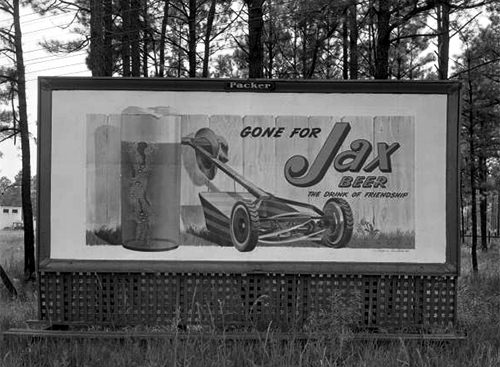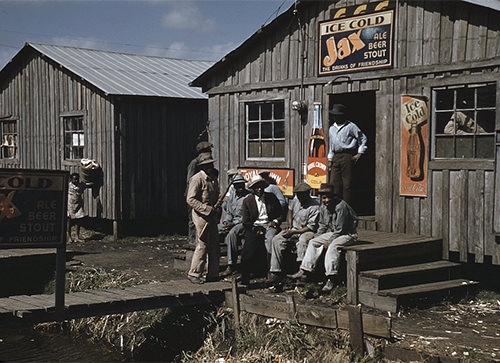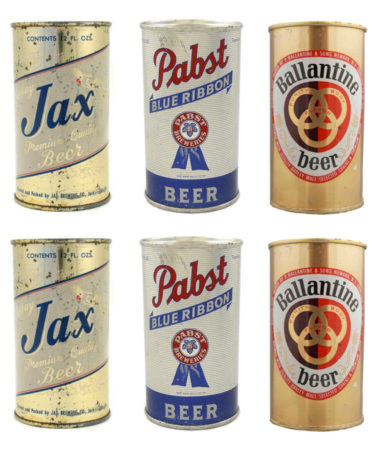There’s an old manufacturing plant at 1701 West 16th Street in Durkeeville, a neighborhood in the Mid-Westside area of Jacksonville, Florida. Go there and you won’t hear or see much. The building’s long been silent, it’s rusted fencing leaning to the side and its white brick darkened by about 60 years of neglect and Floridian humidity. Why the building still stands isn’t really clear. Maybe Jacksonville wants its teens to have safer places for casual vandalism—again, we don’t know. What matters to us: this industrial carcass just might be the hallowed birthplace of the six-pack.
1701 West 16th Street is the shell of the Jax Brewing Company, born in 1913 and deceased in 1956 after some battering by Prohibition, a rival Jax Beer, and the arrival of aluminum cans. But despite these obstacles and its current humble appearance, Jax is one of just a few disputed origins of the six-pack carrier that now dominates the retail beer market.

If you think about it, the concept of buying beers in groups of six has no implicit logic (unless you’re Jerry Seinfeld, in which case, “six is good.”) Like wondering what the Kardashians are up to, we’re just all mundanely used to it. If you’ve ever felt the heft of a 12-pack case or been vaguely annoyed at the unapologetic four-ness of the specialty craft beers you’re buying, you’ve absorbed the decades’ old association. Six is beer, and vice versa.
But why? It’s not entirely clear. Initially we imagined a bunch of power-suited Anheuser Busch execs going over focus group data (“Customers are too embarrassed to purchase seven beers, but too thirsty to settle for just five….OK. Six it is. Bonuses for all!”) And that actually may have been close to the way it went down. Other sources attribute the birth of the six-pack to Pabst, who apparently conducted some creepily misogynistic case studies to determine the maximum number of beers a housewife could comfortably carry home to her husband, presumably while thinking through what kind of sandwich he’d like to eat while watching the game.
As much as we’d like to believe in this sexist daydream of yore, we have others arguing that the six-pack was probably invented by Ballantine’s, a historic Newark, New Jesey-based brewery, in 1938. And then, yeah, there’s a certain dominant soda company that claims ownership of the six-pack dating back to 1923. (At least they’re pretty honest about the purpose: “The carrier helped encourage people to take bottles of Coca-Cola home and drink Coke more often.”)
But for our part, we like the story of William Ostner, a German immigrant and brewmaster from St. Louis. We like Ostner’s story not just because it validates the American dream—with a few hiccups—but because it gives Florida some much-needed cred. Ostner opened Jax Brewing Company in 1913. The company’s Pilsner-style beers took off pretty well locally and in its southern territory, but then Prohibition reared its big, fat, sober head and shut down production. Ostner, the innovator that he was, nodded politely at the Volstead Act and changed the name—and purpose—of his company to Jax Ice & Cold Storage (brewing, meanwhile, something called “near beer,” an optimistic name since the beer itself couldn’t exceed .5% ABV).

When Prohibition was repealed in 1933, Ostner’s sons J.F. and W.A. took over, and Jax Beer was back, incorporating ale and stout styles. Except it wasn’t the only Jax Beer. It wasn’t even the first. The New Orleans-based Jackson Brewing Company had already been brewing a Jax Beer since 1891. The breweries basically split territory, with Florida-based Jax retaining rights to the name. Yet another hiccup resolved.
It’s the last hiccup that (possibly) led to the innovation of the six-pack. When aluminum canned beer took over the market after World War II (all the steel had gone to the fight), Jax Brewery couldn’t keep up with cost. Their solution? Sacks. 100,000 of them, labeled “Jax Beer” and filled with six bottles. The six sack.
Don’t ask us why. We just like the sound of that.
